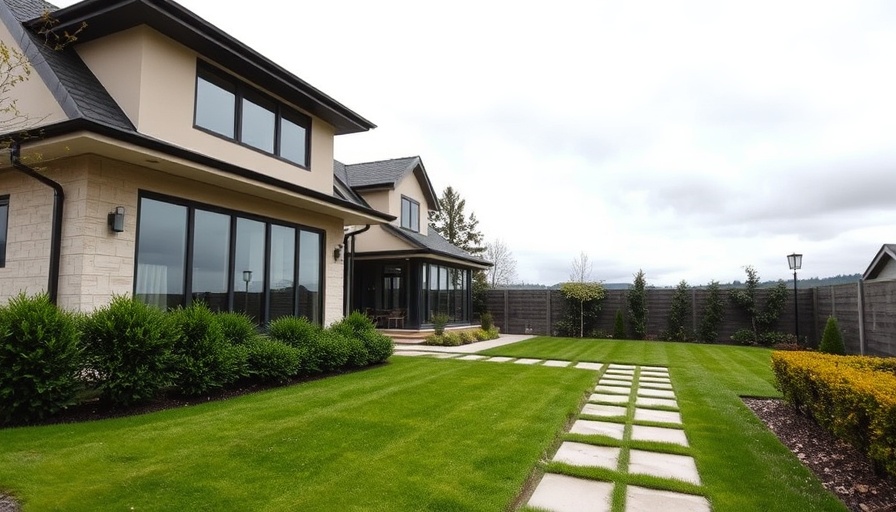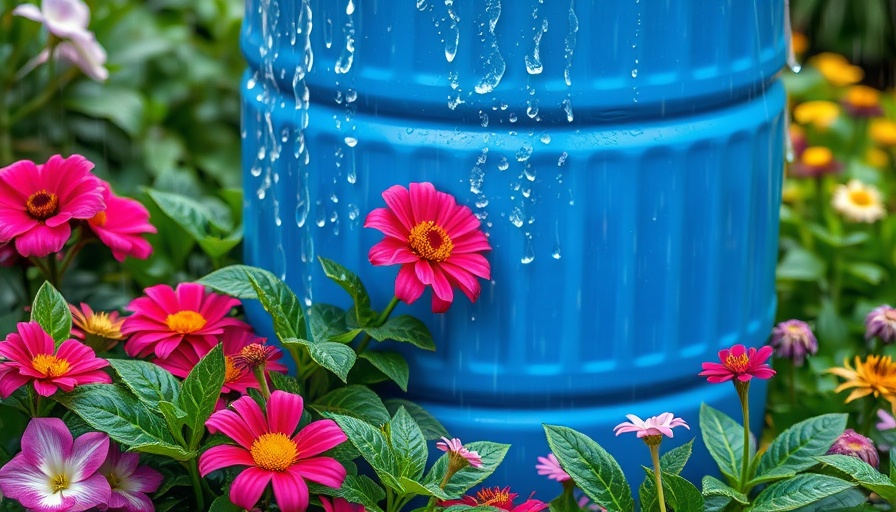
Understanding the Hosepipe Ban Loophole for Your New Lawn
As hosepipe bans continue to emerge across England, many garden enthusiasts find themselves anxious about their new lawns. However, there’s a glimmer of hope in the form of a handy loophole that could save your garden this summer. If you’ve freshly laid turf or sown grass seed, understanding these rules can make all the difference, particularly in regions like London where restrictions are tight.
What You Can Do to Keep Your Lawn Thriving
The comforting news is that newly laid turf can be watered using a hosepipe for up to 28 days after installation, as long as you adhere to specific local regulations. Water companies like Yorkshire Water and Thames Water confirm this exception, albeit with slightly different maze-like rules and guidelines. For example, Thames Water insists that the turf must have been laid by a business to qualify for this loophole. If you find yourself in a similar situation in South East London, note that South East Water allows hosepipe usage for newly laid lawns as long as they were placed before the ban, and watering is deemed unmanageable through alternative means such as using a watering can.
Peak Hours and Restrictions You Need to Know
In addition to the turf provision, you must also avoid watering your lawn during peak hours—typically between 8 AM to 10 AM and 5 PM to 9 PM. This rule is in place to ensure a fair distribution of water resources among residents during periods of shortage. Creative alternatives outside of hosepipes, like drip irrigation systems or rainwater harvesting, might also come in handy. Not only will this keep your grass healthy, but it also contributes to sustainable living practices—something our young London homeowner audience values greatly.
How This Applies to Fresh Grass Seed
If your gardening ambitions involved sowing new grass seeds instead of turf, you’re in luck! Both Yorkshire and Thames Water extend the same 28-day hosepipe allowance to freshly sown grass seeds, provided proper guidelines are adhered to. By keeping these options in mind, you can nurture your green spaces even when water conservation practices are in focus.
Alternative Watering Methods to Consider
Once the hosepipe allowance period concludes, it’s crucial not to let your gardening efforts go to waste. Embrace alternative watering methods such as watering cans, which despite being labor-intensive, can be rewarding and sustainable. Consider configuring a drip irrigation system to keep your new lawn healthy without risking violating water usage laws. With a savvy approach, your greens can flourish despite the restrictions.
Community Insights: Share Your Lawn Success Story
As neighbors and community members, sharing experiences of how you’ve navigated these hosepipe bans can foster a supportive ecosystem among fellow London homeowners. Every success story may inspire others to take even better care of their green spaces. Are you using clever techniques to maintain your garden? Perhaps utilizing smart home tech to monitor your lawns’ watering needs?
Conclusion: Nurture Your Lawn with Confidence
In conclusion, staying informed is your secret weapon against hosepipe bans. With the right understanding of regulations and a sprinkle of creativity, you can keep your lawn vibrant and healthy. Don’t hesitate to share your gardening journey with your community – together we can foster beautiful green spaces across London.
 Add Row
Add Row  Add
Add 




Write A Comment